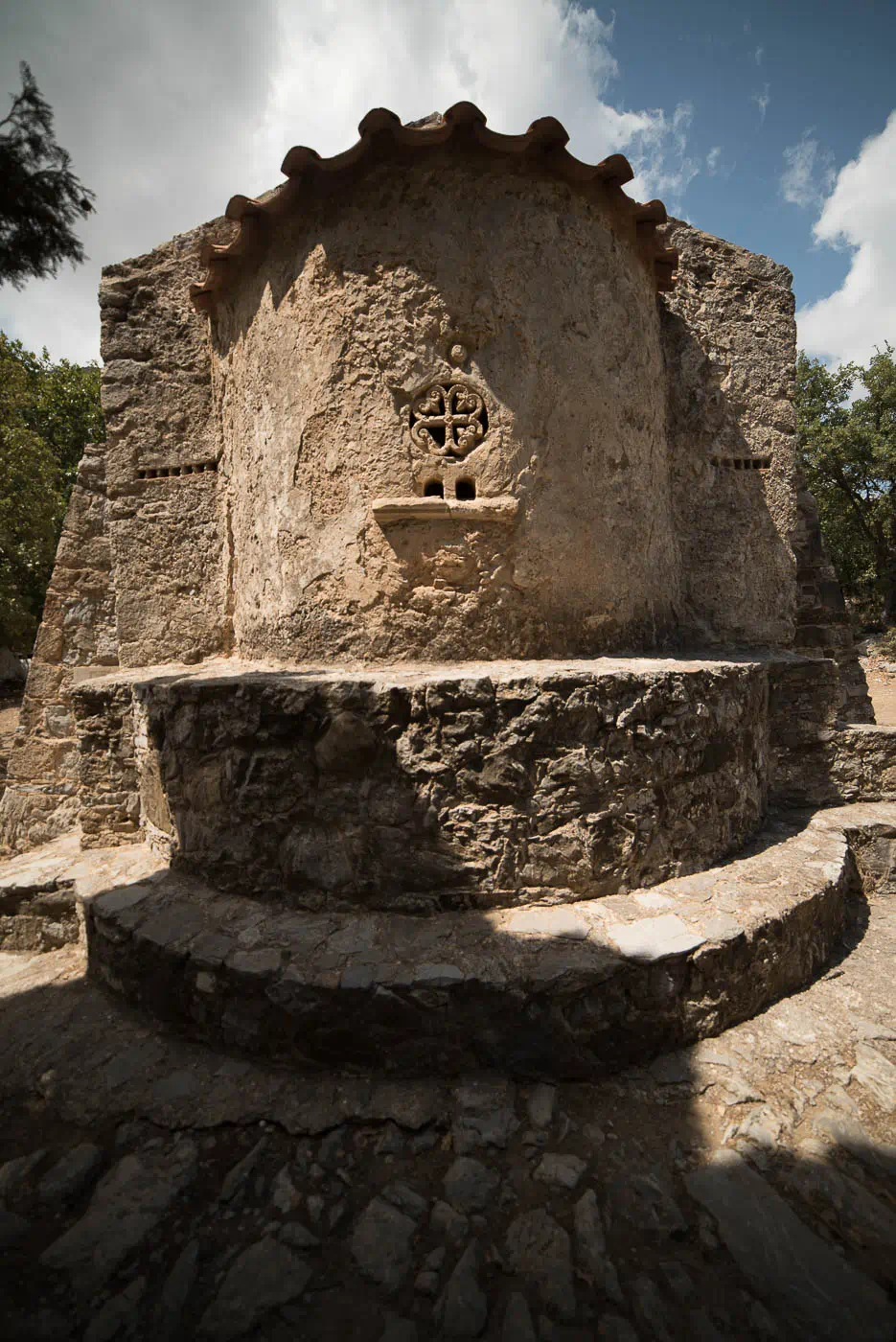

Kaloeidena Monastery and Afentis Christos Church near Ano Meros: A Historical and Religious Gem
Located amidst the lush greenery of the Amari Valley in Crete, the Kaloeidena Monastery, also known as the Monastery of the Transfiguration of the Savior, stands as a testament to the region’s rich religious heritage. Its origins can be traced back to the 13th-14th centuries, and over the years, it has played a significant role in the spiritual and cultural life of the surrounding communities.
A Monastery Steeped in History
The monastery’s name, Kaloeidena, is shrouded in local legend. One tale attributes it to a young woman from the nearby village of Fourfouras who spotted a flame emanating from the site where the monastery now stands. Upon discovering an icon of the Savior there, she exclaimed, “Kalá eídha ego” (I saw well), giving rise to the monastery’s name.
Throughout its existence, Kaloeidena Monastery has witnessed numerous historical events. It flourished during the Venetian era, with records mentioning its existence as early as the 16th century. The monastery’s monks engaged in various activities, including sericulture, olive cultivation, and cherry production.
However, the monastery’s tranquility was disrupted during the Greek War of Independence in 1823. Accused of aiding the rebels, the monastery was razed to the ground by Ottoman forces. Despite this devastation, the monastery was eventually rebuilt in the early 20th century, preserving its original Byzantine architectural style.
A Sanctuary of Faith and Tradition
Today, Kaloeidena Monastery stands as a revered pilgrimage site, particularly on the Feast of the Transfiguration of Christ on August 6th. Devotees flock to the monastery to participate in the Divine Liturgy and immerse themselves in the spiritual atmosphere. The monastery’s surroundings offer a serene setting for reflection and prayer, with towering plane trees providing shade and a tranquil ambiance.
A unique phenomenon observed at the monastery’s plane trees is the “adelphopoiesis” of branches. Smaller, stronger branches fuse with larger ones, creating a robust network that supports the weight of the trees. This natural phenomenon symbolizes unity and strength, mirroring the enduring spirit of the monastery itself.



Afentis Christos Church: A Beacon of Faith
Overlooking the village of Ano Meros, the Afentis Christos Church stands as a testament to the deep-rooted faith of the local community. This Byzantine church, dedicated to the Lord Jesus Christ, is a popular destination for religious gatherings and celebrations.
Every year on August 6th, a lively feast takes place at the church, drawing devotees from neighboring villages. The traditional festivities include a communal meal under the shade of the plane trees, accompanied by music and dance. This joyous celebration reflects the strong bond between the community and its religious heritage.
A Call for Preservation and Revitalization
Despite its rich history and cultural significance, Kaloeidena Monastery faces challenges in preserving its legacy. The monastery’s once-thriving complex now lies in ruins, with only the church and a few surrounding structures remaining intact. The surrounding area is littered with debris, detracting from the site’s spiritual and historical significance.
Efforts are underway to restore and revitalize Kaloeidena Monastery, recognizing its importance as a cultural and religious landmark. With proper preservation and restoration, the monastery can once again serve as a beacon of faith and a center for community gatherings, fostering the preservation of Crete’s rich cultural heritage.
The stories of Kaloeidena Monastery and Afentis Christos Church intertwine, showcasing the enduring faith and resilience of the Amari Valley communities. As these sacred sites stand amidst the changing landscape, they serve as reminders of the region’s deep-rooted traditions and the enduring power of faith.




































There are no comments yet.